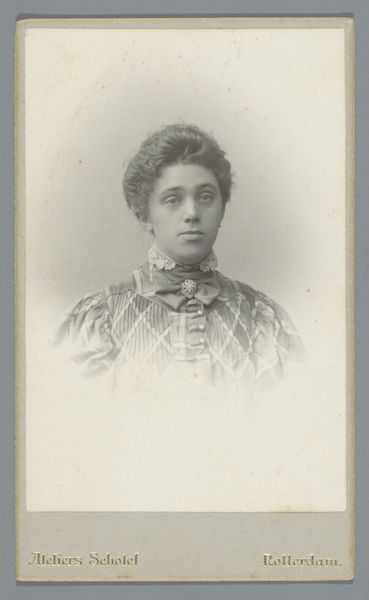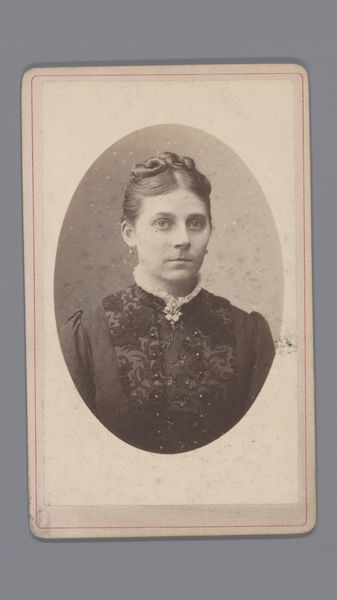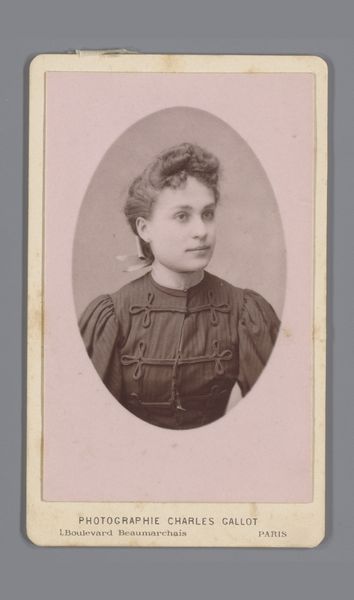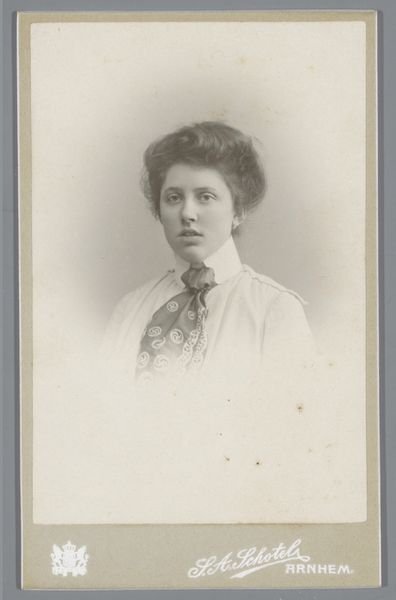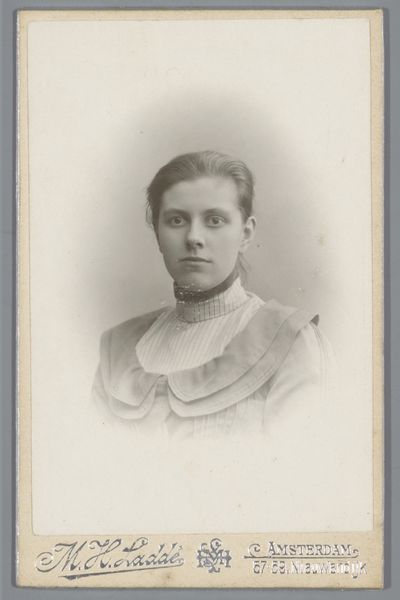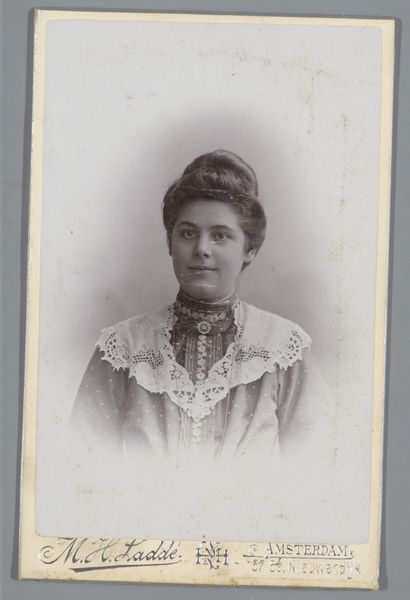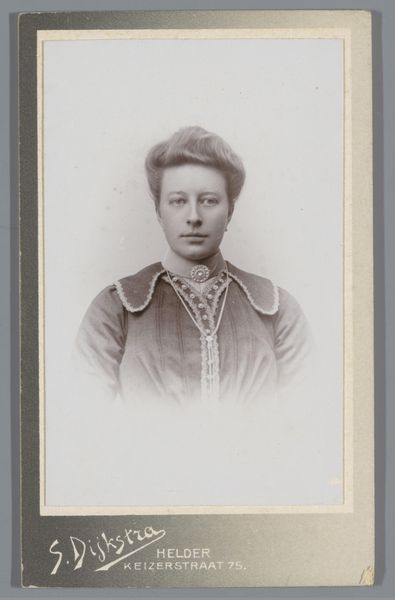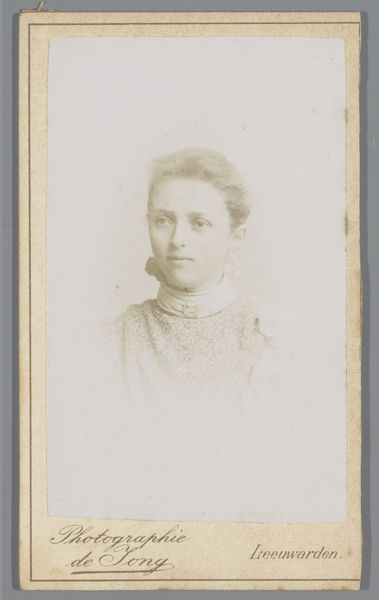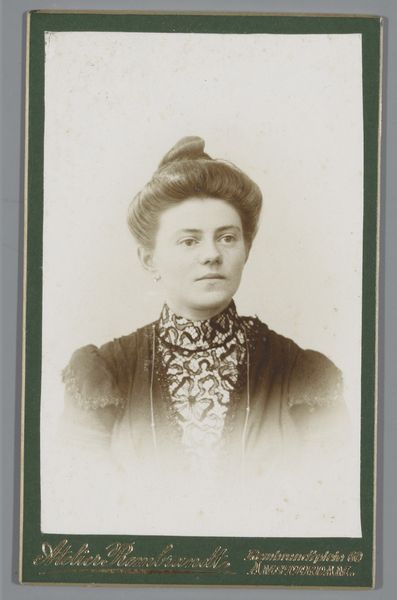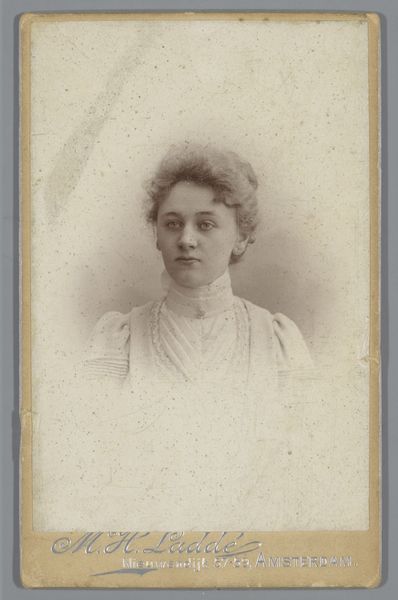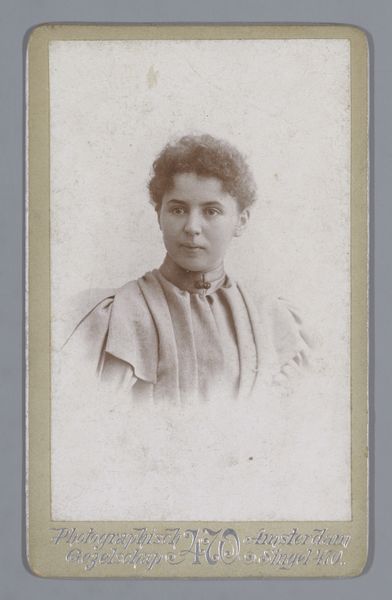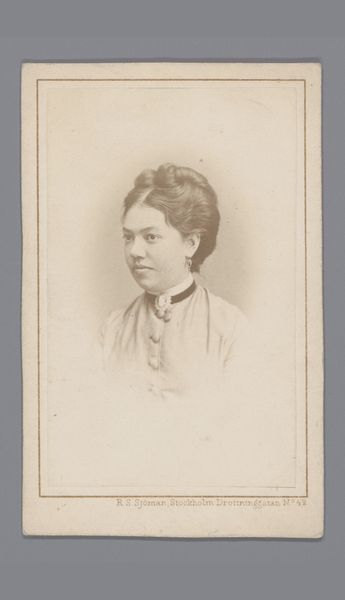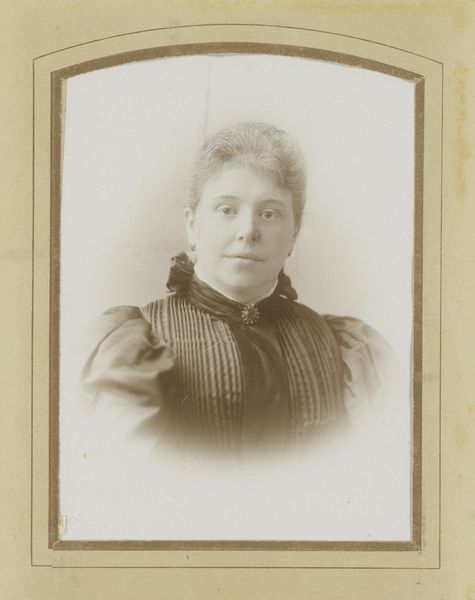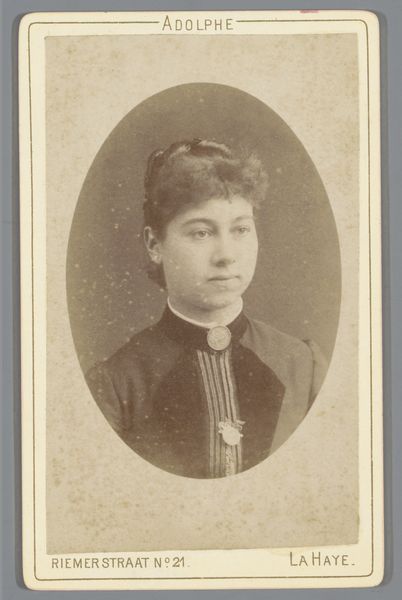
photography
#
portrait
#
photography
#
genre-painting
Dimensions: length 104 mm, width 64 mm
Copyright: Rijks Museum: Open Domain
Editor: This is Albert Greiner's "Portret van een onbekende vrouw" – Portrait of an Unknown Woman – taken sometime in the 1880s. The Rijksmuseum tells us it's a photograph. I’m really struck by how this portrait highlights a moment in time; she almost looks trapped. What stands out to you? Curator: I'm interested in the photographic process itself here. Consider the chemicals, the specialized lenses, the very deliberate poses demanded by the technology of the 1880s. Each decision contributes to how this woman is presented, and also limits her. How is this image an artifact of technological change? Editor: That's interesting. I was mostly focusing on her as an individual. But you're right, the actual making of the photograph would have had a huge impact. Curator: Exactly! We might ask about access to photography. Was this woman wealthy enough to commission a portrait? And what of the photographer's labor? The card bears Greiner's name and Amsterdam address, placing the photo in the marketplace. Consider too, how the proliferation of photographic portraits altered portraiture. Suddenly painting portraits seemed… quaint? Editor: I see what you mean. Photography changed everything about image-making and the market for it. Curator: Precisely! The materials – the chemicals, paper, even the glass plates used for the negative – tell us about industrial advancements. What can these materials reveal about that time, and the social structures that enabled its creation? Editor: Thinking about the materials and production changes my whole perspective. It feels less like looking at a historical individual and more like examining a specific product of its time. Curator: Absolutely. And that's where a materialist lens allows us a fresh view of even a seemingly straightforward portrait.
Comments
No comments
Be the first to comment and join the conversation on the ultimate creative platform.
